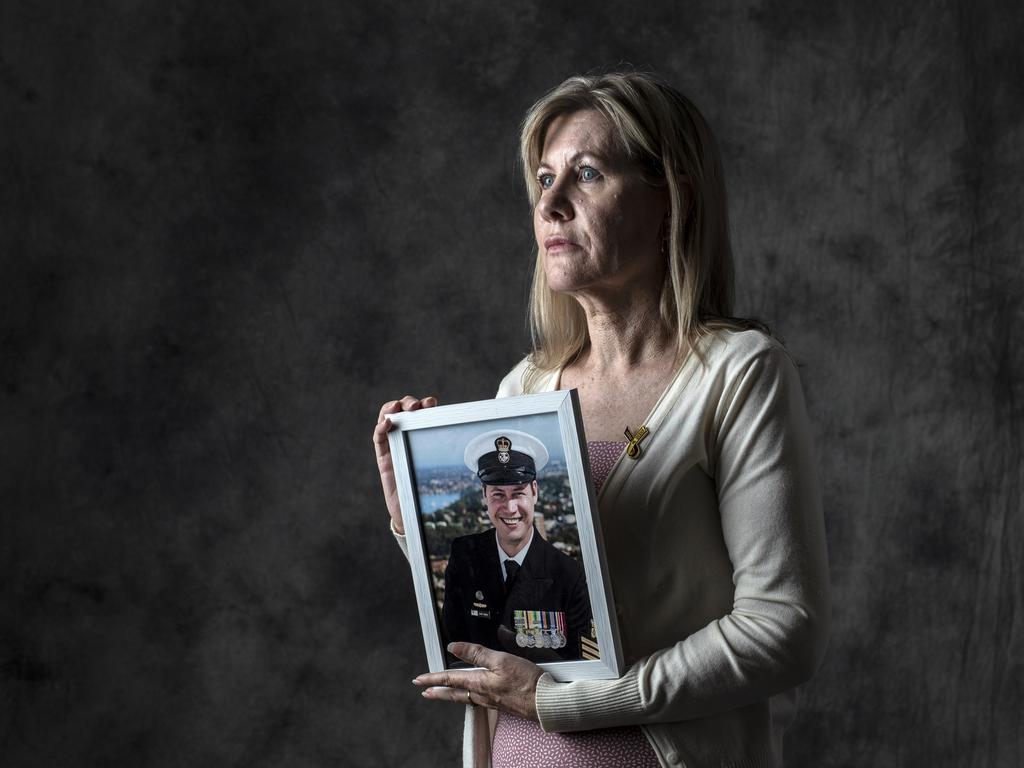A monument to our grief – and our hope

The sculpture, by Alex Seton, is made up of 18 unique droplets of marble, some weighing up to 3000 kgs, which represent the blood sweat and tears shed by all those affected by their military service and their families.
I am a member of the committee that was formed, to have those struggles acknowledged. A committee seeking change. A committee not initiated by any government but insisted upon by the voices of those who have suffered sorrow and loss.
We are the families whose loved ones died not during their military service, but in the aftermath, by suicide.
We found one another in our deepest grief, and we demanded acknowledgment, in the form of a place at the Australian War Memorial.
War and service can and does have consequences. It does come home. The human toll is all around us, in front of our eyes.
With the unveiling today of this monument to the anguish of the returned soldier, this struggle is finally recognised but it remains ongoing.
For as long we as human beings turn to war to settle our petty differences and competing interests, we, as a nation will be required to account for those who so freely sign a defence service contract, so that we might place them in harm’s way.
That responsibility falls heavily on all of us. As a nation we have waxed and waned in that responsibility.
This monument, For Every Drop Shed in Anguish, will be a constant reminder to us of that responsibility. Ignorance or disbelief or mismanagement will no longer be a defence.
This sculpture acknowledges the struggle. It provides that place for the family members, carers and friends to reflect and to grieve; and it provides a place for serving members and veterans to come and reflect on their own suffering and grief.
The historian Tony Judt holds that as citizens of a free society, we have a duty to look critically on our world. If we think we know what is wrong, we must act upon that knowledge.
Philosophers across time are known to interpret the world in just words, the real point is – if we see the need for change, we must act for change with accountability and transparency of action and intention.
But change can only be built on what we have and what we know. The Australian War Memorial is a monument to the dead, built in the aftermath of WW1 to honour those killed in war, or because of their service.
We know that there are over 103,000 ADF members listed on the Honour Roll who were killed in action, died because of illness or their wounds, or whose names are there because they are missing and presumed dead.
The list includes 453 service men and women recognised by the Australian War Memorial as having died by suicide, caused or linked to their service, within two years following their discharge or retirement from the Australian Defence Forces.
That two year “window” was and remains arbitrary.
The Royal Commission into Military and Veteran Suicide is currently investigating what we know about military suicides, and we now know that two-year window is a fallacy. We know there are many more names that need to be added to the Australian War Memorial Honour Roll.
The English essayist George Orwell recognised that change required struggle, writing that “to see what is in front of our noses needs a constant struggle.” Such a struggle has been the shared lived experience of literally hundreds of thousands of Australian family members, carers and friends of serving and ex-serving men and women since Federation.
I would personally like to recognise the many parents, family members, carers and friends who have been touched by the same hand of grief as my family.
We are a formidable group of human beings. Your names are too many to mention for fear of missing someone whom I hold dear.
We appreciate also Australian War Memorial director Matt Anderson and his predecessor, Brendan Nelson. We are grateful to the artist, Alex Seton, for his percipience and compassion which are so visible in his artwork. Thank you for helping us to build on what we know, and for finally being able to express that knowledge without fear or in whisper.
Karen Bird is a member of the Australian War Memorial’s “Sufferings of War & Service” Memorial committee. Her son, Jesse Bird, a I RAR Veteran, committed suicide in 2017 following the rejection by Department of Veteran’s Affairs of his request for incapacity assistance. Bird is a member of Open Door: Understanding and Supporting Service Personnel and their Families.






The Australian War Memorial will on Thursday host a dedication ceremony for a new sculpture, known as For Every Drop Shed in Anguish.